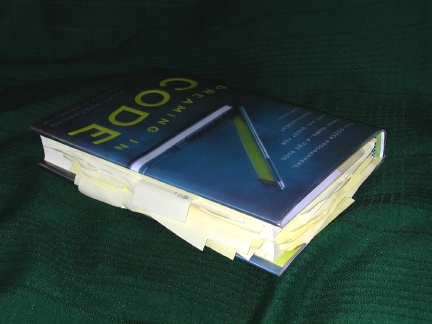Rick Kleffel has a review site called the Agony Column, does a radio show for KUSP, and also podcasts, and sometimes contributes to NPR. So he keeps busy. I met him recently at KQED for an interview about Dreaming in Code, and he showed up with a copy of the book that bristled with more post-it-note bookmarks than I’d have thought physically possible:

It’s great that Kleffel liked my book enough to pay it this kind of close attention. He also recognized my effort to find, in the saga of a software project, some broader themes: for instance, how strange and difficult it is for groups of people to work together creating anything that’s abstract. He wrote: “The book, though it stays focused on software engineering, is clearly applicable to every other realm of life.”
Here’s Kleffel’s review; here’s the audio of our interview. A version of it is scheduled for broadcast on KUSP on Friday at around 10 AM, if you’re in the general Santa Cruz vicinity.
